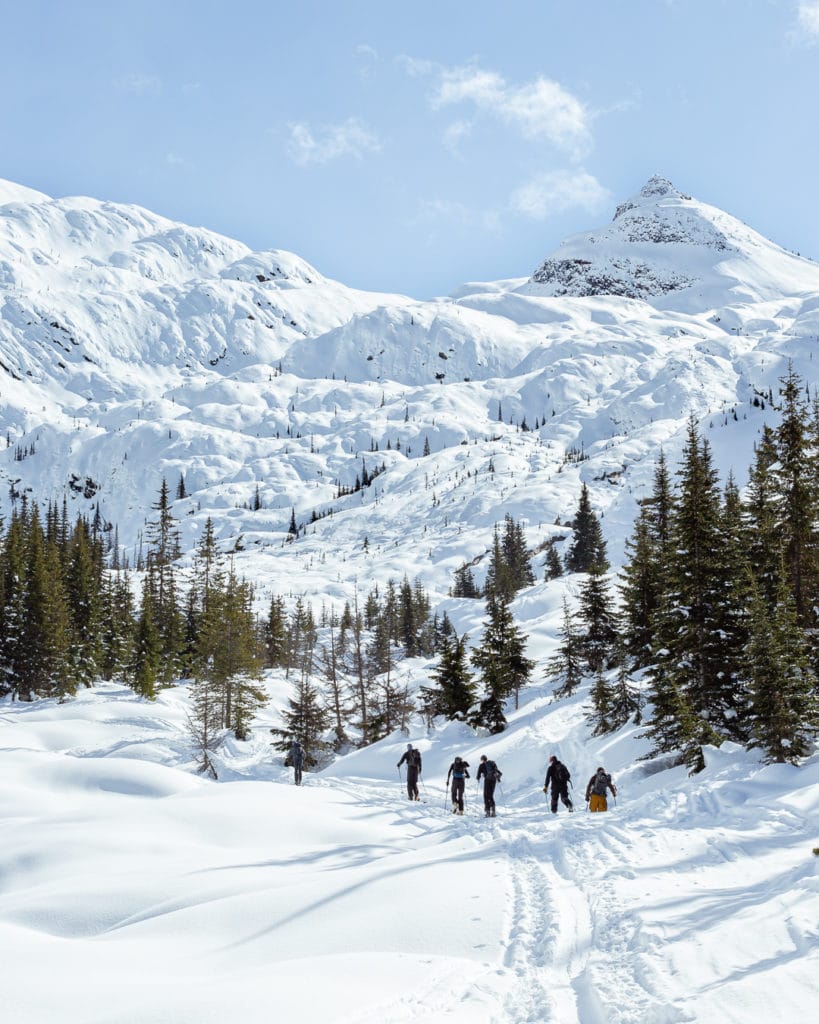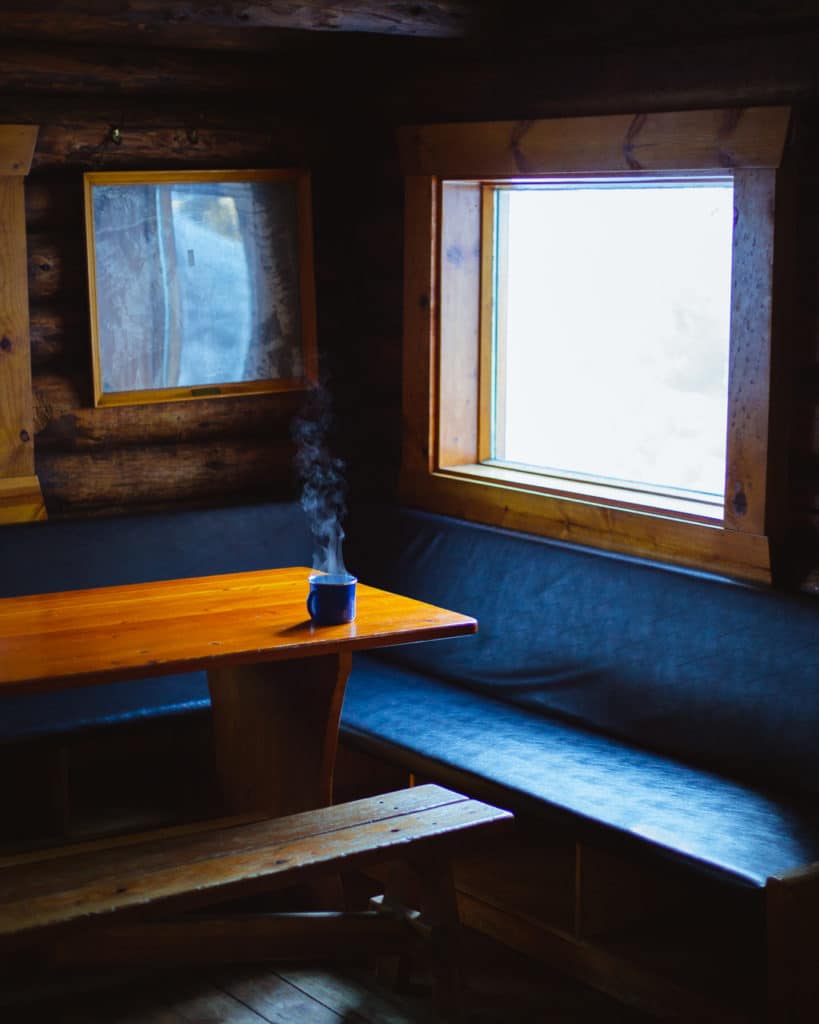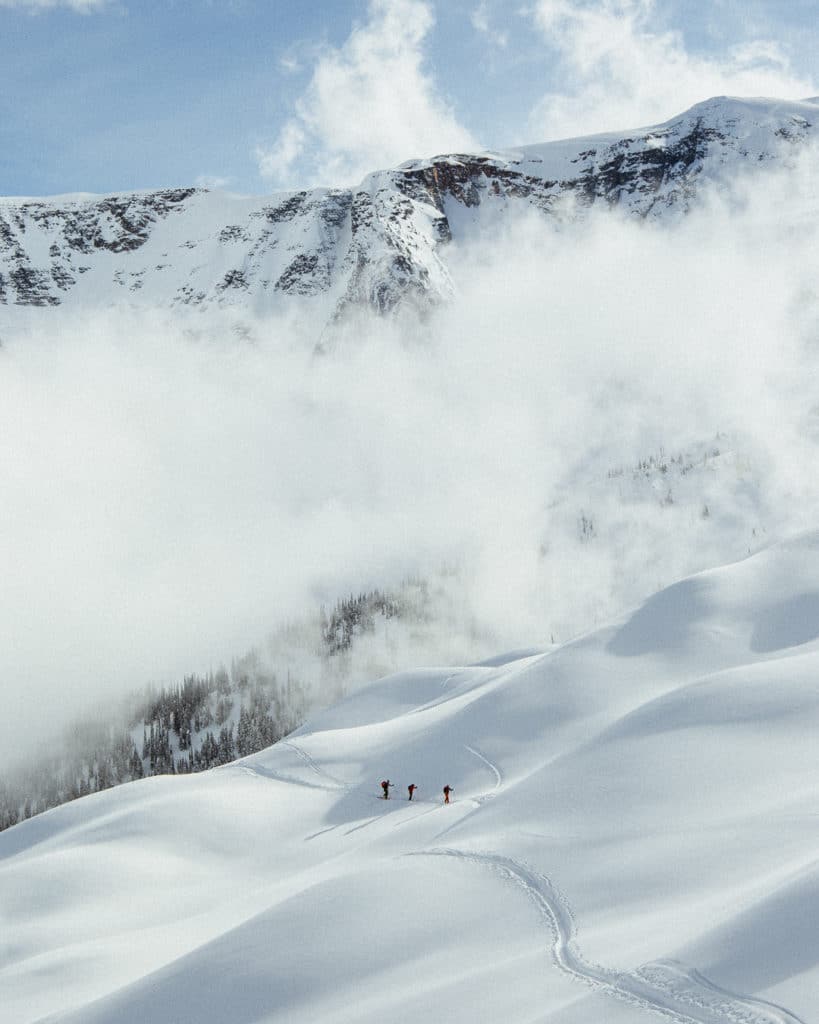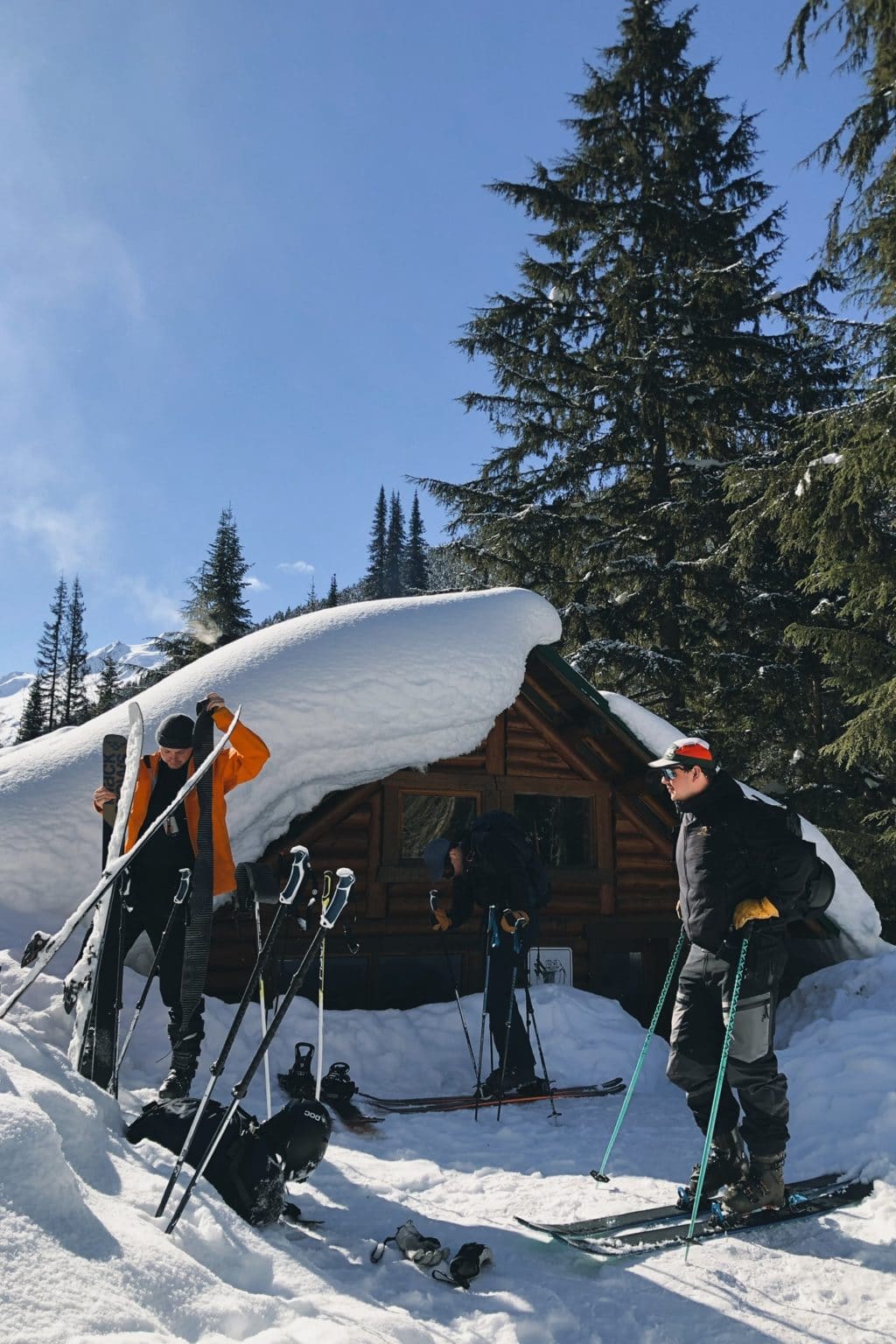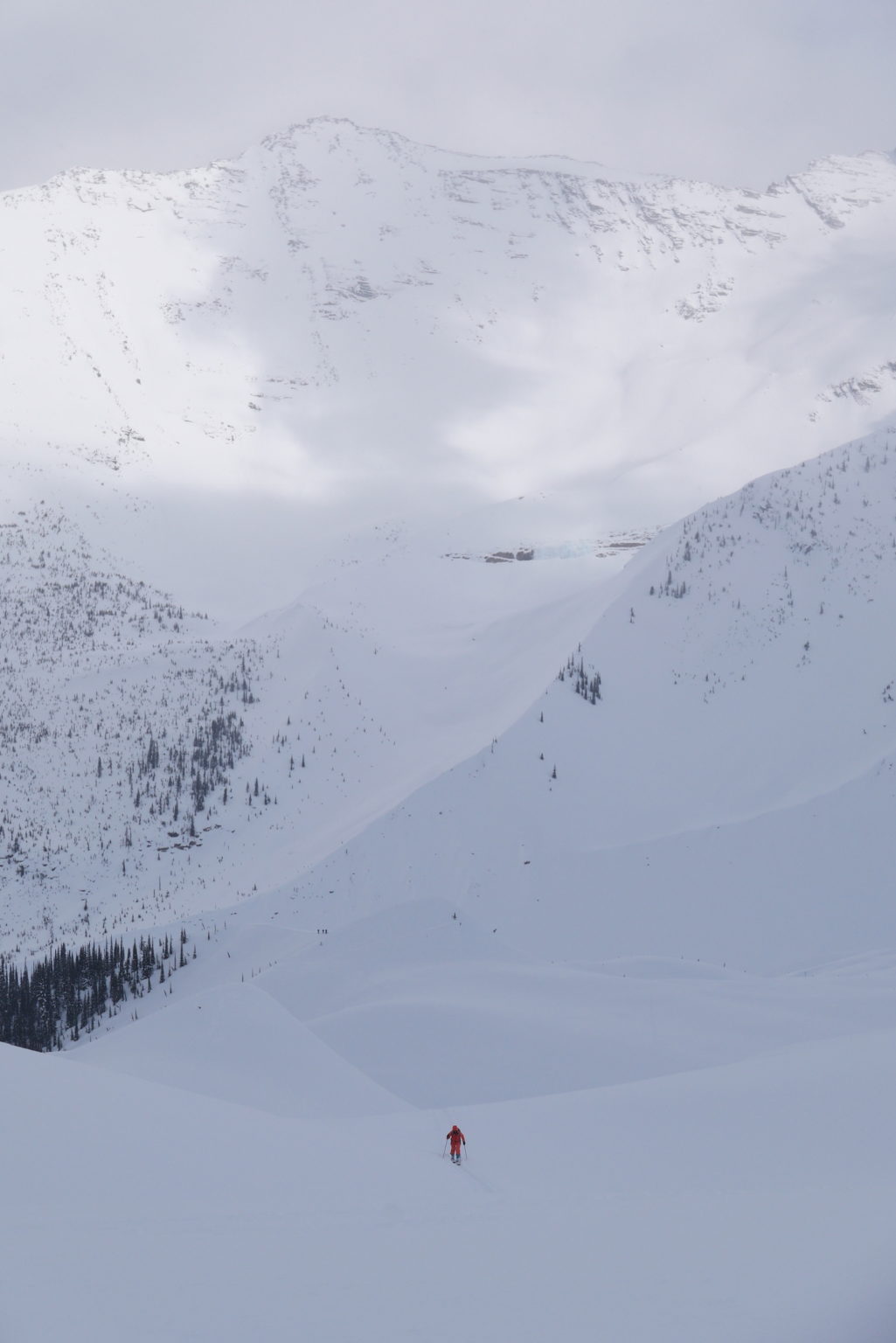It’s 4am. Something is hissing, and when I say hissing, I mean more of a guttural growl at the feet of our sleeping bags. We are packed like sardines on the loft of a backcountry hut in one of B.C.’s provincial parks. Stars glisten above us, crystals form on the steamed hut windows amidst minus 30 temperatures. Despite our contribution to the hut’s thermal status, the family of pine martens who inhabit it are not happy with us.
Needless to say, most of the group got very little sleep that night. Some chose to leave the following morning, skiing back to their cars. Those of us who stuck around wiped sleeplessness from our eyes and set out for a day of ski touring. I couldn’t help but laugh at the terror and resulting delirium that these small members of the weasel family had caused our city-dwelling group, accustomed as we are to the austerity and illusion of control over nature that our urban environments provide.
Out in the backcountry, we willingly take a step closer to the natural order of things. We are less invincible, more vulnerable to the elements and to the balanced predator prey dynamics of intact ecosystems. Outside of nature in our daily lives, we insulate ourselves from these dynamics, call them threats, and feel that any encroachment is an infraction on our dominance that must be addressed accordingly.
Recently, a mother bear and her cub were killed by conservation officers in Victoria, B.C. after they were reported eating garbage that was left out. The language used in an effort to justify this dramatic and inhumane reaction colours the victims as dangerous, aggressive, and habituated. In reality, they had wandered into town via a river in search of food and safe harbour. In talking about the killing of these bears, using austere language like “sow” instead of mother, and “euthanize” instead of kill, we downplay their lives. We share more than 80 per cent of our genes with these bears, and grizzlies have one of the largest brains relative to body size among land-dwelling carnivores. Observe one for even a few moments undisturbed and you’ll notice just how similar we are — inquisitive, playful, intelligent.
Bears, as well as wolves and other predators, suffer from unjust defamation in colonial storytelling and modern media. Instead of evoking mental images of the curious, playful nature and familial affection between pack members, these cohabitants of B.C. are vilified as fanged, growling, unholy beasts. The language used by the media in justifying the unwarranted killing of these powerful creatures does nothing to help the case; using words like “aggressive”, “dangerous” and “offending” has never led to increased empathy or understanding.
Currently, wolves all over the province are being legally shot from helicopters in accordance with B.C.’s wolf cull, a misguided and inhumane caribou conservation strategy by the government. In essence, it’s an admission of failed caribou and habitat management, an all too familiar story of humans playing god with the natural world. We know, generally, how the story ends when we don’t respect balance.
How did we get here? We have forced our way into ecosystems, set up shop and created our own set of rules to mitigate discomfort. The impacts include habitat loss, extinction and ecological imbalances that result in natural disasters, to name a few. For a species that lived for tens of thousands of years in harmony with nature, we have become embarrassingly afraid of it. We exercise complete control over our environments, setting the thermostat to our exact internal body temperature, installing locks on everything, spending more time indoors and in virtual environments than ever before. We forget who we are, and as a result, we fail to see the other beings in our environment as the emotional, intelligent, and curious creatures they are.
As we returned on the second night to that backcountry hut, bracing for another chaotic evening with our musteloid roommates, I noticed something different in my own disposition. Having spent a couple days in that heightened state of awareness required in the backcountry, I felt more at peace with the situation. To move through wild country, with all the implications of predator prey dynamics and exposure to nature’s whims, is to return to a primordial state. Here, we are aware and accepting of our place in the environment. With this renewed sense of appreciation and attunement to my surroundings, I felt more compassion for the pine martens who clearly were just as unsettled by our presence in their home.
You can describe a pine marten, or a grizzly, or a wolf, any way you want — predator, carnivore, vicious, dangerous or problematic (as the parks service dubbed our hut companions). Ultimately, those are characterizations of players in the stories we humans craft about ourselves and our imagined world. In reality, we are not so different from all of these beings, genetically and in disposition. Playful, loyal, curious, cunning and at times defensive; once we move past the perceived “otherness” of non-human life we see our own endearing traits mirrored back. If we strip back the lore and myth, the statistics about population, diet, habitat and other forms of scientific classification that we so revere, then we can begin to embrace the essence of a similar savvy, emotional being. One that deserves every bit as much as we to exist peacefully in this world.
